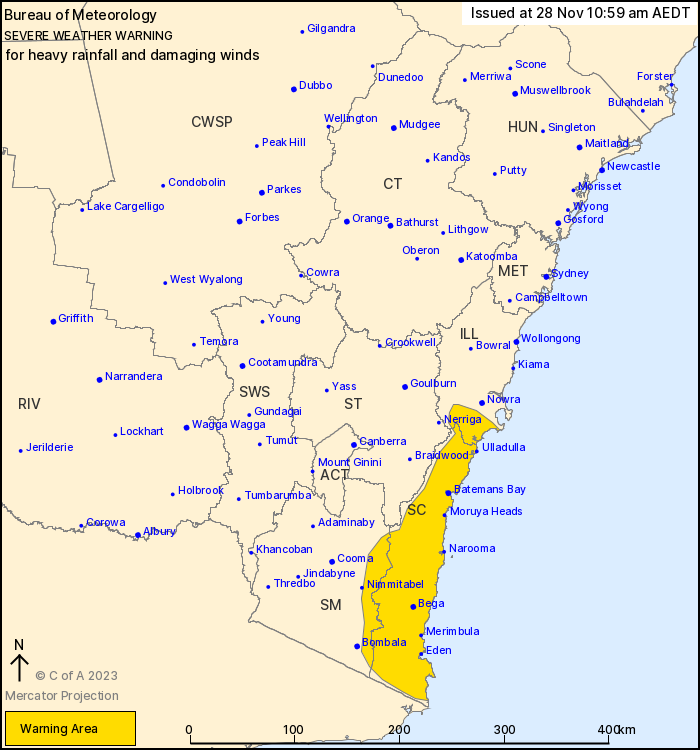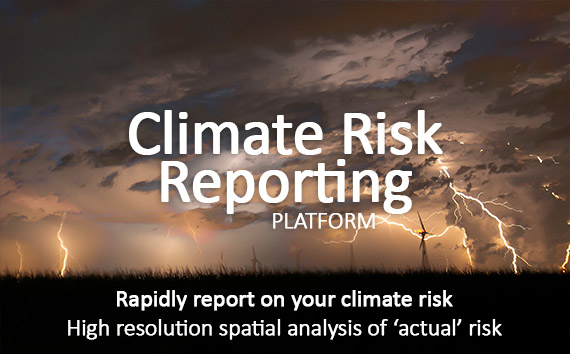Source: Bureau of Meteorology
For people in South Coast and parts of Illawarra and Snowy
Mountains Forecast Districts.
Issued at 10:59 am Tuesday, 28 November 2023.
Heavy rainfall and possible damaging winds for the southeast from
Wednesday morning.
Weather Situation: A broad low pressure system over southern
inland New South Wales is moving slowly towards the southeast,
developing in response to a strong upper trough to the west. By
Wednesday morning, a second low pressure centre is expected to
develop just offshore of the South Coast. Rich moisture drawn to
the south of this low will lead to persistent rain areas over
southeastern New South Wales with some embedded heavier showers and
thunderstorms. Strong winds may also develop just to the south of
the low.
HEAVY RAINFALL which may lead to FLASH FLOODING is forecast for
the South Coast and parts of the Snowy Mountains and southern
Illawarra from early Wednesday morning. Six-hourly rainfall totals
of 50 to 100 mm are possible, with isolated falls of up to 150
mm.
DAMAGING WINDS averaging 60 to 70 km/h with peak gusts of around
90 km/h are possible along the coastal fringe south of Moruya Heads
from late Wednesday morning, though there is more uncertainty with
this risk due to the movement and position of the low.
The broad severe weather risk should begin to contract to the
south during Wednesday afternoon, though heavy showers and
thunderstorms are possible later in the day.
Locations which may be affected include Batemans Bay, Eden, Bega,
Moruya Heads, Narooma and Merimbula.
The State Emergency Service advises that people should:
* Move vehicles under cover or away from trees.
* Secure or put away loose items around your house, yard and
balcony.
* Keep at least 8 metres away from fallen power lines or objects
that may be energised, such as fences.
* Trees that have been damaged by fire are likely to be more
unstable and more likely to fall.
* Report fallen power lines to either Ausgrid (131 388), Endeavour
Energy (131 003), Essential Energy (132 080) or Evoenergy (131 093)
as shown on your power bill.
* Don't drive, ride or walk through flood water.
* Keep clear of creeks and storm drains.
* If you are trapped by flash flooding, seek refuge in the highest
available place and ring 000 if you need rescue.
* Be aware that run-off from rainfall in fire affected areas may
behave differently and be more rapid. It may also contain debris
such as ash, soil, trees and rocks.
* After bushfires, heavy rain and the loss of foliage can make the
ground soft and heavy, leading to a greater chance of
landslides.
* Stay vigilant and monitor conditions. Note that the landscape
may have changed following bushfires.
* For emergency help in floods and storms, ring your local SES
Unit on 132 500.

28/Nov/2023 12:04 AM



